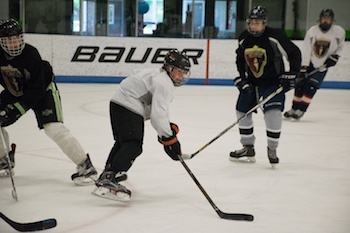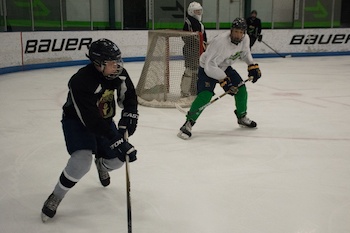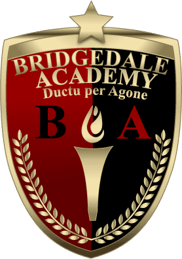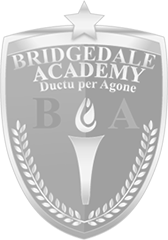The best way for a youth hockey player to develop
by Mike McPartlin, Headmaster, Bridgedale Academy
What kind of mindset does a player need to get to the next level?
My last article discussed some of the off-season programs for youth hockey players striving to reach the next level. This article takes a more philosophical approach to the youth hockey development process.
What qualifies as success in athletic development?
 There are surely many ways to define success in athletic development.
There are surely many ways to define success in athletic development.
To me, success in athletic development occurs when an athlete realizes his potential, i.e. when he turns his potential into reality.
So how does a youth hockey player realize his full potential?
Most coaches will tell you there are a few “musts,” i.e. a few things that have to happen along the way, in order for a youth hockey player to ultimately realize his full potential.Here’s the consensus:
-
The player must make the necessary commitment to excellence
-
The player must do the necessary training along the way
-
The player’s training must be goal-oriented and purposeful
-
The player’s training must be both physical and mental
-
The player’s training must be habitual
-
The player must stay focused on his goals
-
The player must be disciplined and avoid distractions
Let’s look at each separately:
-
The player must make the necessary commitment to excellence
This is the most important “must” of all. And it is the most elusive.
All players have dreams about becoming a great player. Most even dream, at some point, of playing in the NHL. And most will even say out loud that they are determined to get to the next level.
 But having dreams, or saying how determined you are, is not what we’re talking about.
But having dreams, or saying how determined you are, is not what we’re talking about.
The type of commitment that is necessary is one that is nearly always life-changing. It compels the player to follow through on it by taking action, and by being consistent in taking action so that good habits become ingrained.
Note that even very young children will sometimes make this kind of commitment and follow through on it resolutely. It is the proverbial youngster who has “flipped his switch,” and who is thereafter willing to go through years of development with both maturity and confidence.
The maturity factor has to do with an understanding on the player’s part that there are no guarantees that he will realize his dream. Only an understanding that without such a commitment he is guaranteed NOT to realize his full potential.
The confidence factor has to do with the player believing in himself and being willing, throughout the process, to abide by the commitment made.
And of course only the player himself can flip his own switch. A parent, coach, friend or teammate cannot do it for him, no matter how much they might wish they could.
-
The player must do the necessary training along the way
The true challenge to a player who makes a commitment to excellence comes later.
Because his commitment level will be surely be tested along the way. Will the player go through his workout even though his training partner can’t make it that day? Will he stick to his training schedule, even though some friends are going to a party?
A player who has truly flipped his switch will stay the course.
-
The player’s training must be goal-oriented and purposeful
The training cannot be haphazard. It must be structured and have a purpose. The player should set reasonable goals and then train purposefully each day to move his development along toward achieving each goal.
Malcolm Gladwell’s best-seller “Outliers” goes into detail about how important it is that training be purposeful. And it only makes sense.
And of course it can be very helpful, most would say even necessary, for the player to have at least some guidance from an expert during this training.
-
The player’s training must be both physical and mental
Developing Game Sense:
The best athletes in the world possess not only great physical skills and attributes, but also great in-game vision and game-sense.
In hockey, it is the ability to instantly recognize situations as they occur during the course of the game, and then quickly make good decisions in response.
Decision-making is an area in which coaches can help, e.g. by pointing out things to look for when reading in-game situations. But ultimately, these “thinking” skills too the players must “learn by doing” and so develop on their own.
And the younger these decision-making skills are developed, the better.
Poise Under Pressure:
It is also true that the very best players also exude an almost eerie calmness when under pressure in competitions.
Many studies have been made trying to understand this characteristic, and in most of them at least some credit is given the athlete’s use of visualization, a mental skill that most believe can be developed. There are many books and articles that discuss the process of visualization and how often top athletes use it. Here's a link to one such article: Visualization Techniques for Athletes.
-
The player’s training must be habitual
This is something of a synthesis of a) doing the necessary training and b) having it be goal-oriented and purposeful. But the bottom line is that the player should be consciously developing the types of life habits that are beneficial for an athlete.
He should, for example, be in the habit of eating healthy food and avoiding junk food. He should always get enough sleep to allow for recovery, etc.
The value of developing good habits is undeniable. The great philosophers regarded good habits as crucially important in life.
Here are two quotes from Aristotle that are just as true for youth hockey development:
“Good habits formed at youth make all the difference” and “It is easy to perform a good action, but not easy to acquire a settled habit of performing such actions.”
-
The player must stay focused on his goals
Periodically, and often, the athlete should reaffirm to himself exactly why he is doing his training. Keeping a log of training exercises and reps is always valuable. And so is keeping a chart to evaluate progress along the way.
Setbacks and disappointments happen. The athlete must keep his focus in spite of the inevitable disappointments that will occur along the way.
-
The player must be disciplined and avoid distractions
This could fit under “stay focused,” but it encompasses more. The distractions an athlete needs to avoid usually come away from the rink or the gym. When the player is where he is supposed to be and doing what he is supposed to do, he is usually okay.
This means a serious athlete will avoid situations where stupid or unhealthy activities can or might happen. It means staying smart.
Conclusion
It might as well be a law of nature that “the greater the thing you hope to achieve, the more you must give up in order to achieve it.”
But it is a rare child who can either understand or appreciate that. And so it is up to the parents to make those decisions about what the youngster must give up in the interest of his future achievement, including of course his development as a hockey player.
By the time a player is 16- or 17-years old, he will usually be fairly set in his ways.
If a player of that age is on track to fully realize his potential as a hockey player, then he will have already developed good habits. If, however, he is not yet on that path, getting on it can be a daunting challenge indeed.
And so, to best guarantee the athletic development of a youth hockey player, the goal should be getting the 10- and 11-year old players to start developing the types of good habits that will allow them to realize their potential when their time comes.
These youngsters should thus be doing the types of age-specific training that will lay a foundation of good habits that can be built on later. That’s what all the great ones did.
To learn more about Bridgedale, please click the button below to schedule a time to chat with Bridgedale's Headmaster.
Attention 4th Graders
Bridgedale Academy is accepting a limited number of 4th graders for the 2023-24 school year, on a case-by-case basis. Please call me at 708-712-5079 to inquire.
Mike McPartlin, Headmaster

Bridgedale students LOVE going to school,
They LOVE coming to school every day.
And as a result, they are thriving.
... and so they come to love learning.
... and so they more fully develop their skills.
They LOVE getting so much better ... so much sooner.
They are physically fit and mentally alert ... they are thriving.
“Every shot you don't take won't go in.”
Bridgedale is now enrolling students for the 2023-24 School Year.
Bridgedale Academy is an all-boys school for athletes, a prep school for serious youth hockey players. We offer the 4th through 8th grades. In addition to our winning combination of sports and academics, we focus on leadership training. We use a classical academic curriculum and our graduates go on to attend some of the most prestigious high schools in the midwest, including Lake Forest Academy, Culver Military Academy, Shattuck St. Mary’s, Northwood School, Benet Academy, Fenwick Prep, Loyola Academy, St. Ignatius Prep, Marmion Academy, St. Viator, Latin School and Providence Catholic. We pride ourselves on being the top youth hockey prep school in the nation. Our grads go on to top colleges and universities, including Notre Dame, Harvard, Denver, Ohio State, Bentley, Western Michigan, Miami (OH), Boston College, Tufts, Nebraska (Omaha), Hobart, Adrian, MSOE and more. More than thirty (30) of our graduates have already received their NCAA Division 1 college hockey commitments. Seven (7) of our grads have gone on to compete for USA Hockey’s National Team Development Program (NTDP). A number of our grads have been NHL-drafted (one made his NHL debut this past season). Our grads play at all levels of college hockey and many are now playing junior hockey in the USHL, the NAHL and the OHL.





